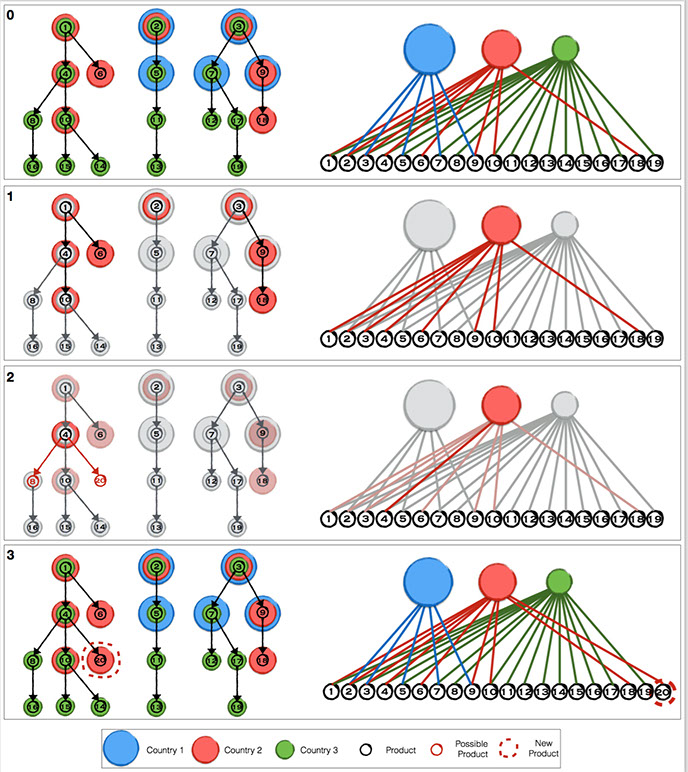From innovation to countries diversification: a simple competitive model

Current models of economic growth consider the relationship between the inputs of country goods production and their effects on the overall productivity, without taking into consideration the measure of the diversity of the input.
First Hidalgo/Hausmann proposed a new metric, then optimized by Tacchella et al., for comparing the competitiveness of countries through a fitness model based on the complexity of the exported products, analyzing the binary export matrix M, obtained by the Revealed Comparative Advantage (RCA). The matrix M defines the adjacency matrix of a bipartite network, through which it is possible to derive a products network, based on the co-occurrence of goodies in the export basket of different countries.
Thus the productivity processes appearing in a country can be obtained from the directed network structure of products space. We now present an algorithm for the product innovation for the M−matrix that can replicate the evolution of the binary export matrix without introducing the concept of capability. In our algorithm the evolution of the M-matrix is driven by the dynamical evolution of a products network, in which different countries occupy different nodes; in such a structure, the innovation is given by the creation of new nodes, due to the efforts of different countries.
In summary, we propose a model for the countries' products innovation processes that reproduces the main characteristic of the history pattern of the export matrix. The base of our model is the products network, in which countries evolve by occupying different nodes, i.e. exporting different products.
Thus, the development of a new product in a country basket appears as the result of two concurrent mechanisms, the introduction of a brand new product with respect to the whole products space against the possibility of copying a product from the neighbors; in this way, the topology itself of the products network is evolving, driven by the countries occupation. The countries' products development is formalized as a power law, plus an offset: the former is responsible of the products copying dynamic, and the latter represents the pure innovation process.